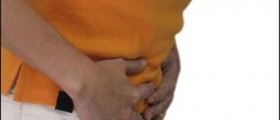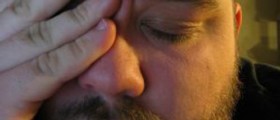Facial twitching is something everyone has experienced at least once in their lifetime. However, if it lasts more than a week, the problem must be taken seriously, and the underlying cause must be identified as soon as possible. This way, the patient can receive proper treatment and eliminate the unpleasant symptoms.
Facial twitching represents involuntary contractions of facial and eye muscles. A variety of facial structures may twitch, and there can be eyelid twitching and squinting, mouth twitching and grunting nose wrinkling, and general grimacing.
Facial twitching can be rather unpleasant, and patients may feel embarrassed in the presence of other people since they are not able to control involuntary contractions of facial muscles and facial expressions. Facial twitching can even bring them to very uncomfortable situations.

Causes of Facial Twitching
One of the leading causes of facial twitching is anxiety and prolonged exposure to stress. Under stress, a person may go through episodes of twitching which usually resolves spontaneously once the problematic situation has gone. Furthermore, facial twitching can be a consequence of physical stress and muscle fatigue. The excess of physical activity may be responsible for involuntary muscle contractions.
Certain medications, especially if they are taken for longer periods, may be related to the onset of facial twitching. Even intake of too much coffee may stimulate facial nerves and result in facial twitching.
In adults, facial twitching accompanied by intensive pain on just one side of the face is usually associated with facial neuralgia. This condition is thought to be caused by damage to the facial nerve.
Facial twitching is a characteristic of hemifacial spasms, a condition caused by chronic irritation of the nerves in the face. Hemifacial spasm develops as a consequence of increased pressure of the blood vessels onto the facial nerves, tumors, multiple sclerosis, stroke, or basilar meningitis. Facial twitching may be one of the characteristics of Parkinson's disease and Gilles de la Tourette syndrome.
- The patient is a 20-year-old man who presented with new episodes of facial twitching. He carried a diagnosis of mitochondrial disease and epilepsy. At the age of 13, he had his first generalized tonic-clonic seizure, and these have been well controlled for over 3?years. He presented with a 5-week history of left facial twitching and was admitted for long term video monitoring to characterize events.
- Within minutes of EEG being hooked up, patient had mild hemifacial twitching involving both the upper and lower face (corner of the eye and the corner of the lips) on the left side, which spontaneously resolved within 45?s. He continued to have multiple episodes, without any loss of awareness. On EEG, there were no abnormal changes, and there were also no interictal discharges. Initially, this was most suggestive of hemifacial spasms.
- Overnight, the twitching occurred in sleep (mainly N2 sleep) and became more pronounced, frequent, clearly clonic in nature, and spread to involve the right side of his face. He continued to maintain awareness and was able to talk and follow commands during the events. The EEG still did not reveal epileptiform discharges, ictally or interictally, but showed muscle artifact that evolved in an epileptic pattern. The pattern was rhythmic, with gradual increase in frequency followed by slowing prior to ending abruptly. All these features supported the diagnosis of seizures.
In children, facial twitching predominantly affects boys and does not last long. It is caused by stress, anxiety, and fatigue.
And finally, a lack of certain nutrients, such as magnesium deficiency, may result in facial twitching.
Treatment for Facial Twitching
Facial twitching caused by stress, anxiety, or fatigue can be dealt with by massages. Furthermore, the patients may benefit from vitamin B which may calm the nervous system and reduce the episodes of twitching. In children, the problem can be solved by providing a stress-free environment. There are even certain medications prescribed to children, such as Risperdal. Nervousness and anxiety can be also alleviated by certain herbs.
Patients suffering from hemifacial spasms are prescribed gabapentin, phenytoin, and carbamazepine. If these medications are not effective enough, patients may be injected with Botulinum toxin, which temporarily paralyzes facial muscles. Patients suffering from facial neuralgia may benefit from microvascular decompression surgery.
And finally, if facial twitching is caused by a certain deficiency, the particular nutrient can be taken in the form of supplements.

















Your thoughts on this
Loading...